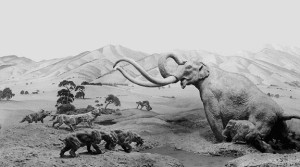La Brea Tar Pits Facts
Discover why California’s tar pits are among the richest and most well-known sites for ice age mammal bone excavations!
The viscous tar lakes known as Rancho La Brea in California have yielded some of the most numerous and insightful fossilized remains ever discovered on Earth. While hundreds of years ago, locals thought the bones excavated from the pits were those of cattle and native wildlife, it now transpires that the remains are in fact those of many million plants, creatures and megafauna dated between 10,000-40,000 years old from the Pleistocene epoch. Specimens discovered include sabre-toothed cats, dire wolves and mammoths.
Millions of years ago, when Los Angeles was underwater, dead marine life and sediments built up on the seabed. As more and more sediment piled up – not to mention the immense weight of the overlying ocean – the layers of carbon-rich organic matter became increasingly compressed and heated. In an environment starved of oxygen this caused the material to become fossil fuels, such as crude oil (petroleum).
 Once the sea receded, the tar at La Brea began to form. Petroleum deposits far below the surface were forced to bubble up to the surface by underground pressure. Gradually, as the petroleum evaporated from the surface, large pools of thick, sticky asphalt, or pitch, were left behind.
Once the sea receded, the tar at La Brea began to form. Petroleum deposits far below the surface were forced to bubble up to the surface by underground pressure. Gradually, as the petroleum evaporated from the surface, large pools of thick, sticky asphalt, or pitch, were left behind.
The land was capable of sustaining vegetation, and plants and even trees took root here, enticing animals and insects to venture out over the pits. This is what led to many prehistoric creatures, large and small, becoming trapped in the sticky lakes.
Once consumed by the tar pits, the bones of the dead animals did not decompose, but instead were perfectly preserved, producing some of the most impressive fossilized remains ever to be found.

